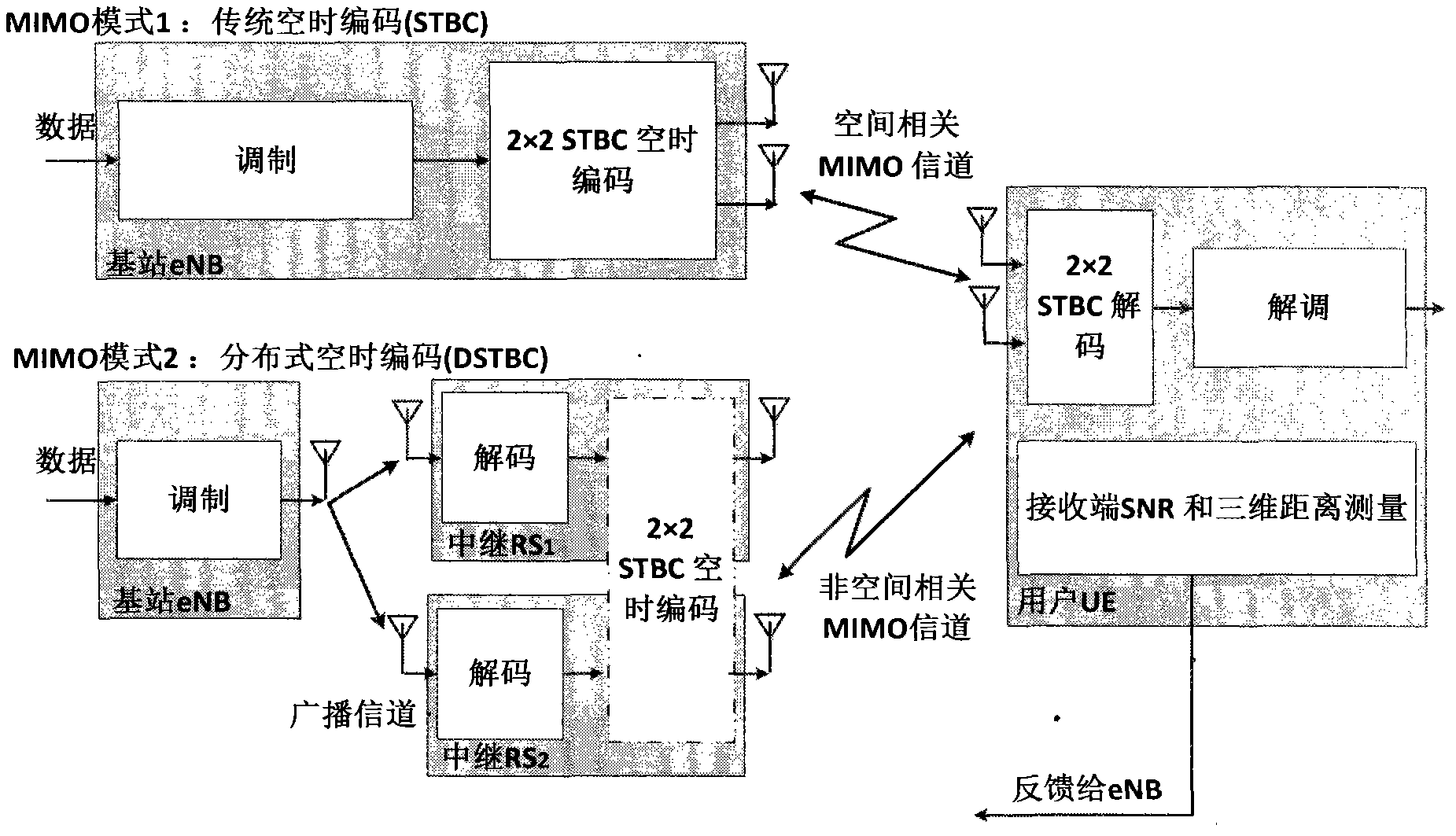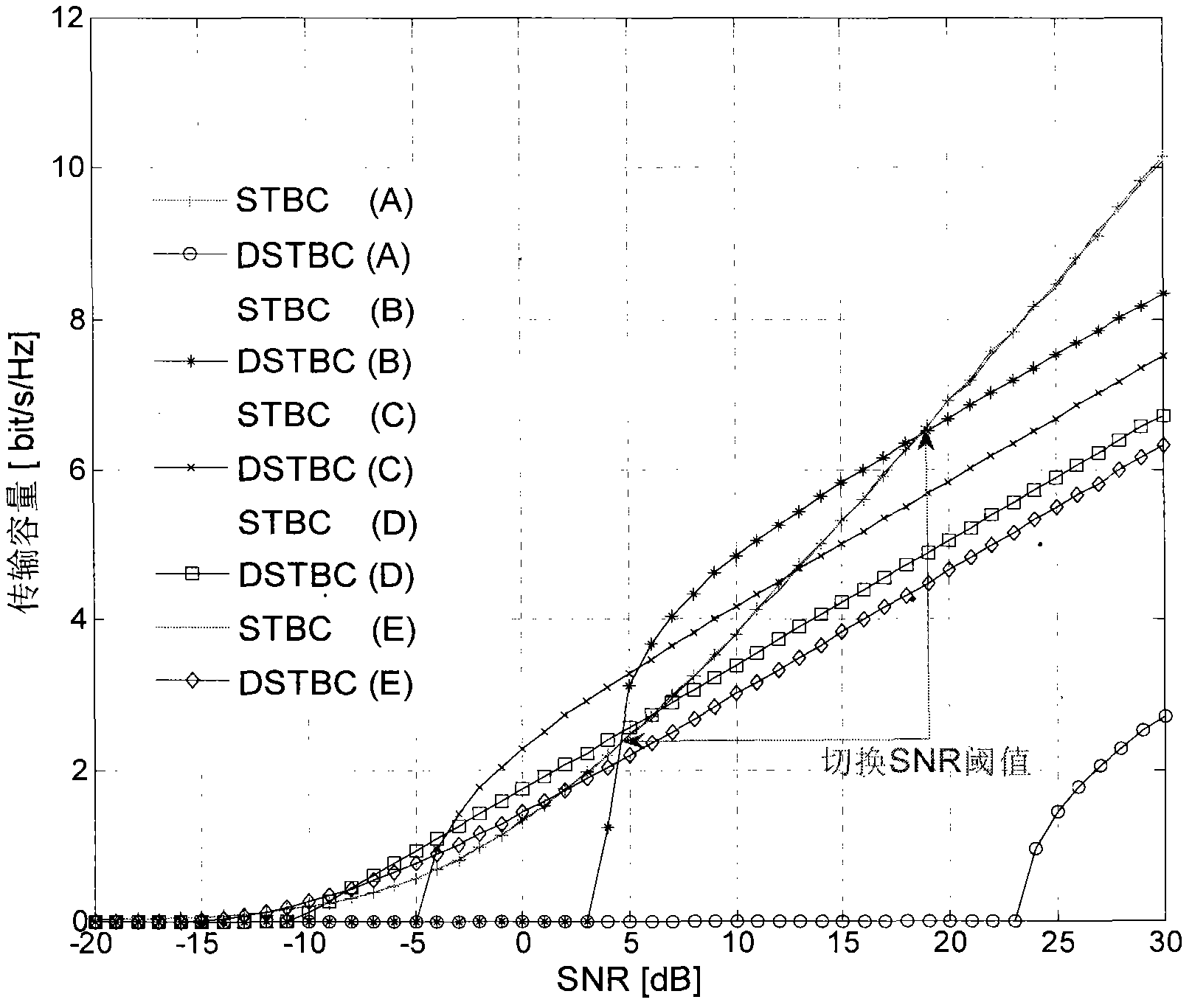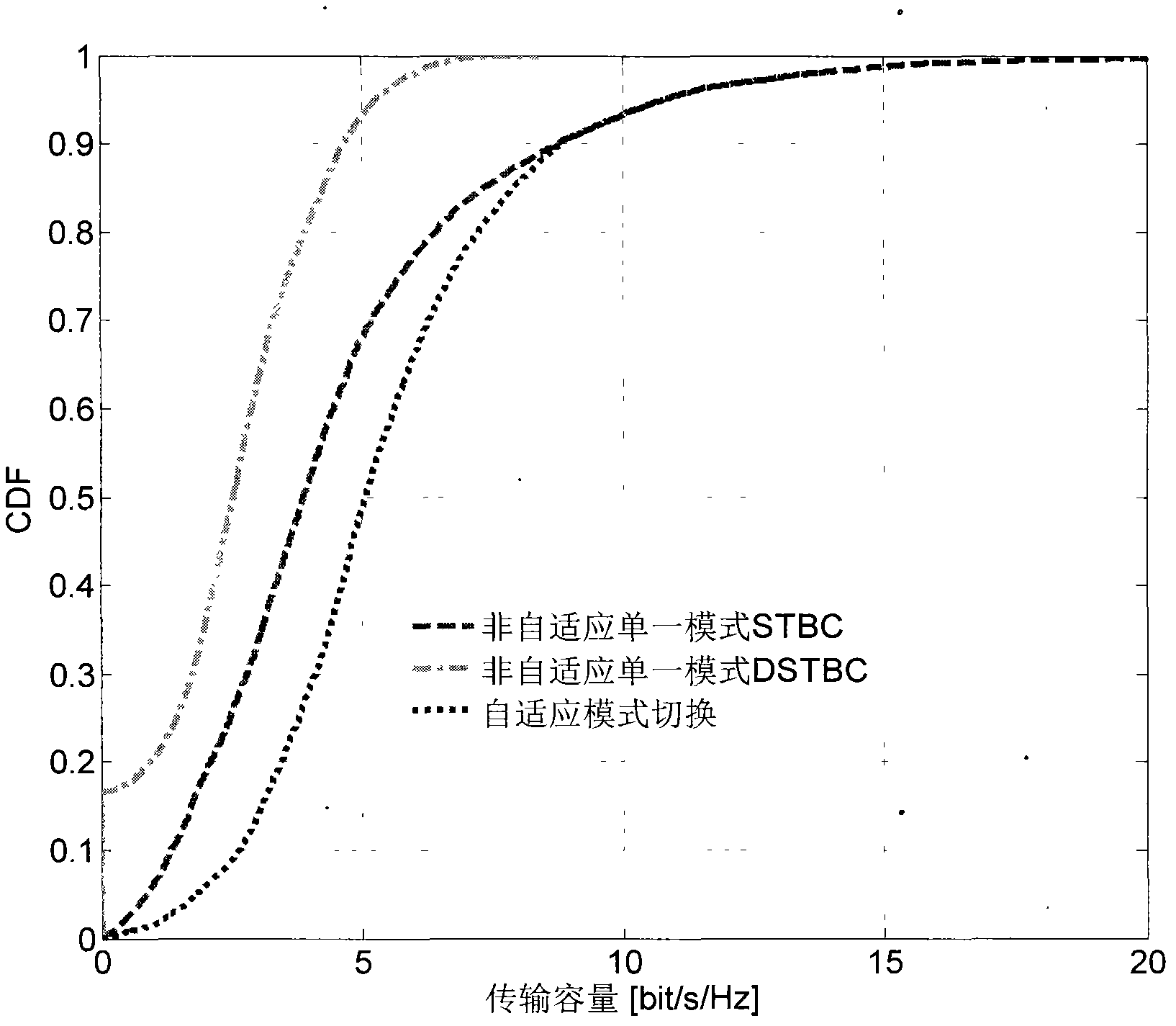MIMO mode switching scheme for distributed space-time coding and traditional space-time coding
A technology of space-time coding and mode switching, applied in diversity/multi-antenna systems, spatial transmit diversity and other directions, can solve the problems of distributed MIMO and traditional MIMO switching problems that are not studied in literature, and achieve the effect of high transmission rate
- Summary
- Abstract
- Description
- Claims
- Application Information
AI Technical Summary
Problems solved by technology
Method used
Image
Examples
Embodiment Construction
[0019] Specific embodiments of the present invention will be described in detail below. The present invention designs a switching scheme between DSTBC and STBC, adopts the principle of maximizing transmission capacity, and selects the MIMO mode that can enable UE to obtain greater transmission capacity. When using the traditional STBC transmission mode, the eNB side uses two antennas to perform Alamouti space-time coding and directly transmits the signal to the UE; The two nearest relays perform data forwarding, and the two single antennas of the two relays are combined into a virtual antenna matrix for distributed Alamouti space-time coding to forward the data to the UE. The distance between the UE and the two relays and the distance between the UE and the eNB are called three-dimensional distances. The handover measurement between DSTBC and STBC is related to the three-dimensional distance and the signal-to-noise ratio (SNR) of the signal received by the UE. The specific i...
PUM
 Login to View More
Login to View More Abstract
Description
Claims
Application Information
 Login to View More
Login to View More - R&D
- Intellectual Property
- Life Sciences
- Materials
- Tech Scout
- Unparalleled Data Quality
- Higher Quality Content
- 60% Fewer Hallucinations
Browse by: Latest US Patents, China's latest patents, Technical Efficacy Thesaurus, Application Domain, Technology Topic, Popular Technical Reports.
© 2025 PatSnap. All rights reserved.Legal|Privacy policy|Modern Slavery Act Transparency Statement|Sitemap|About US| Contact US: help@patsnap.com



